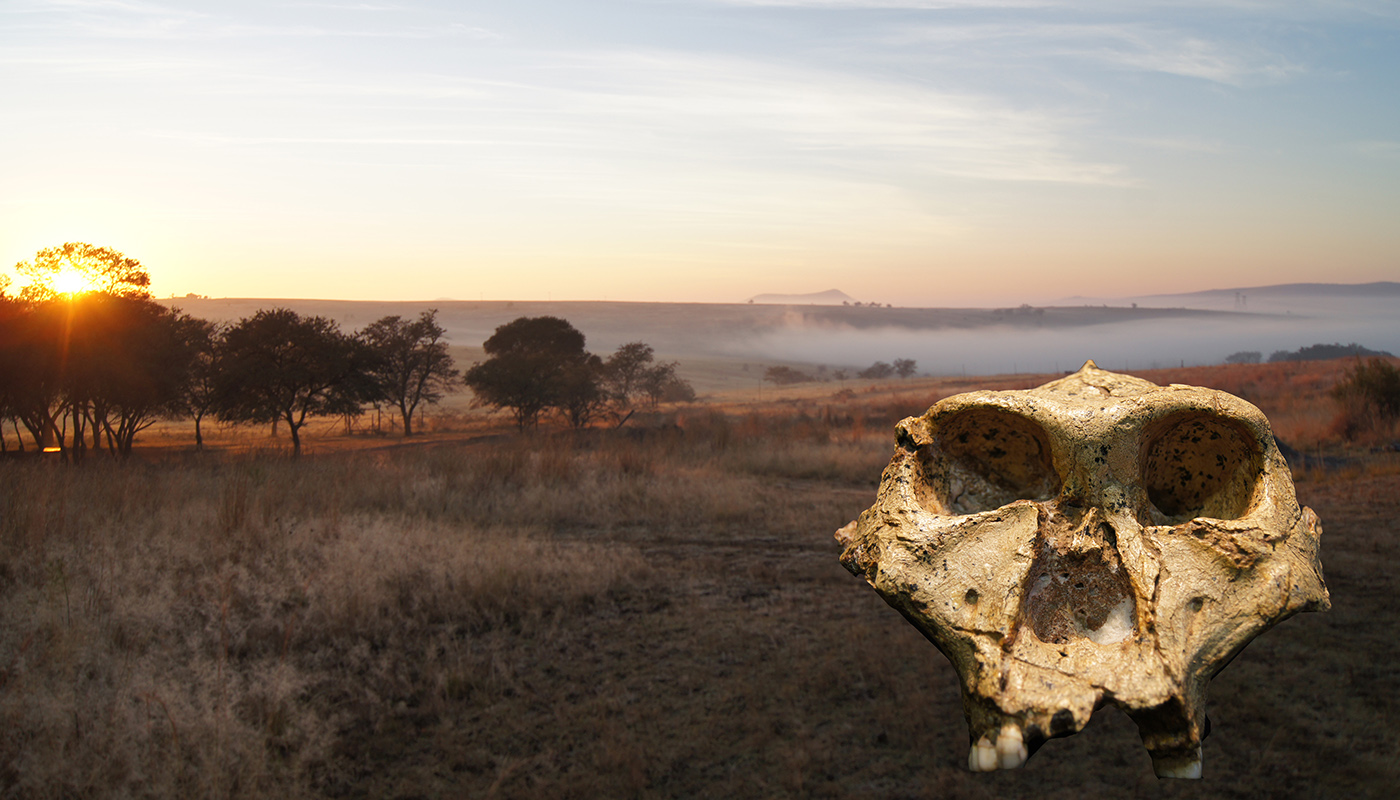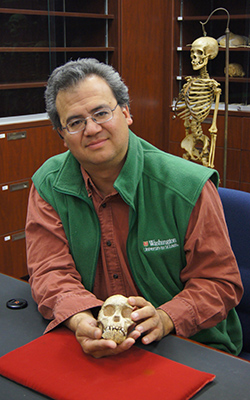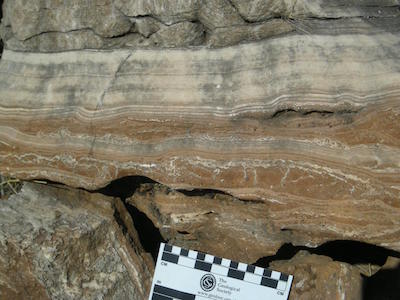
Drastic climate changes shaped the timeline for rich deposits of early human ancestor fossils found in a network of South African caves known as the “Cradle of Humankind,” suggests a new study co-authored by paleoanthropologists at Washington University in St. Louis.

“This is a really important study that should transform our understanding of the timing of important events in human evolution,” said David Strait, professor of anthropology in Arts & Sciences at Washington University and a study co-author.
“Much of what we know about early human evolution comes in the form of fossils from South African caves, but up until now we’ve had only a coarse understanding of the geological age of those fossils,” Strait said. “Now, as a result of this work, we have a much better understanding of how and when early humans evolved across a landscape and in relation to environmental change.”
Published online Nov. 21 in the journal Nature, the study was conducted by an international team of scientists from South Africa, Australia and the United States. It was led by Robyn Pickering, an isotope geochemist at the University of Cape Town, who began dating the cradle cave fossils 13 years ago as part of her doctoral research.
“The bulk of the work in this paper was done by Robyn,” said co-author Terry Ritzman, assistant professor of anthropology in Arts & Sciences and of neuroscience at Washington University School of Medicine in St. Louis. “David and I are paleoanthropologists, meaning that we study the fossil record of human evolution. We helped Robyn sort out some of the broader implications of this work for understanding how, when and why our early ancestors and close relatives evolved.”

The Cradle of Humankind is a World Heritage Site northwest of Johannesburg that includes complex fossil-bearing caves. It’s the world’s richest early hominin site and home to nearly 40 percent of all known human ancestor fossils, including the famous Australopithecus africanus skull nicknamed Mrs. Ples.
Until now, it has proven difficult to precisely date these fossils and assess their evolutionary history, owing to the disordered nature of the collapsed cave sediments in which the remains were preserved.
Pickering and colleagues instead analyzed the thick flowstones that surround the fossil-bearing sediments, which can be dated by measuring their trace radioactive isotopes. Flowstones, such as stalactites and stalagmites, form in caverns when flowing waters deposit dissolved minerals. The authors find that flowstones were deposited in six intervals between 3.2 and 1.3 million years ago. These, they suggest, represent wetter periods, in which there was more water to deposit the flowstones and the caves were more likely to be closed off to incoming sediments and hominin remains, allowing flowstones to form uninterrupted, but leaving gaps in the fossil record.
When the climate became drier, however, vegetation cover would have diminished, increasing surface erosion and opening the caves to outside sediments and the preservation of hominin remains. Although the wet periods may have left gaps in the fossil record, the authors note that the flowstones nevertheless offer valuable insights into past changes in the climate.

“Unlike previous dating work, which often focused on one cave — sometimes even just one chamber of the cave — we are providing direct ages for eight caves and a model to explain the age of all the fossils from the entire region,” Pickering said. “Now, we can link together the findings from separate caves and create a better picture of evolutionary history in southern Africa.
“The flowstones are the key,” Pickering said. “We know they can only grow in caves during wet times, when there is more rain outside the cave. By dating the flowstones, we are picking out these times of increased rainfall. We therefore know that during the times in between, when the caves were open, the climate was drier and more like what we currently experience.”
This means the early hominins living in the cradle experienced big changes in local climate, from wetter to drier conditions, at least six times between 3 and 1 million years ago. However, only the drier times are preserved in the caves, skewing the record of early human evolution.
Until now, the lack of dating methods for cradle fossils made it difficult for scientists to understand the relationship between East and South Africa hominin species. Moreover, the South African record has often been considered undateable compared to East Africa, where volcanic ash layers allow for high resolution dating.
Andy Herries, professor of archeology at La Trobe University in Australia and a co-author of the study, notes that “while the South African record was the first to show Africa as the origin point for humans, the complexity of the caves and difficultly dating them has meant that the South African record has remained difficult to interpret.”
“In this study, we show that the flowstones in the caves can act almost like the volcanic layers of East Africa, forming in different caves at the same time, allowing us to directly relate their sequences and fossils into a regional sequence,” Herries said.
The results return the cradle to the forefront and open new opportunities for scientists to answer complex questions about human history in the region.
“Robyn and her team have made a major contribution to our understanding of human evolution,” said Bernard Wood, a leading paleoanthropologist and professor of human origins at the Center for the Advanced Study of Human Paleobiology at George Washington University. Wood is not an author on the study.
“This is the most important advance to be made since the fossils themselves were discovered,” Wood said. “Dates of fossils matter a lot. The value of the southern African evidence has been increased many-fold by this exemplary study of its temporal and depositional context.”
Editor’s note: This story contains material from news releases issued by the University of Cape Town and the journal Nature.
Source: Robyn Pickering, Andy Herries, Jon Woodhead, John Hellstrom, Helen Green, Bence Paul, Terrence Ritzman, David Strait, Benjamin Schoville & Phillip Hancox. U–Pb-dated flowstones restrict South African early hominin record to dry climate phases. Nature, Nov. 21, 2018. DOI: 10.1038/s41586-018-0711-0
Funding: The research was supported by grants from the Australian Research Council (DECRA DE120102504); the National Science Foundation (BCS 0962564); the University of Melbourne McKenzie Post-Doctoral Fellowship (0023249); and an Australian Research Council Future Fellowship (FT120100399) and Discovery Project (DP170100056).